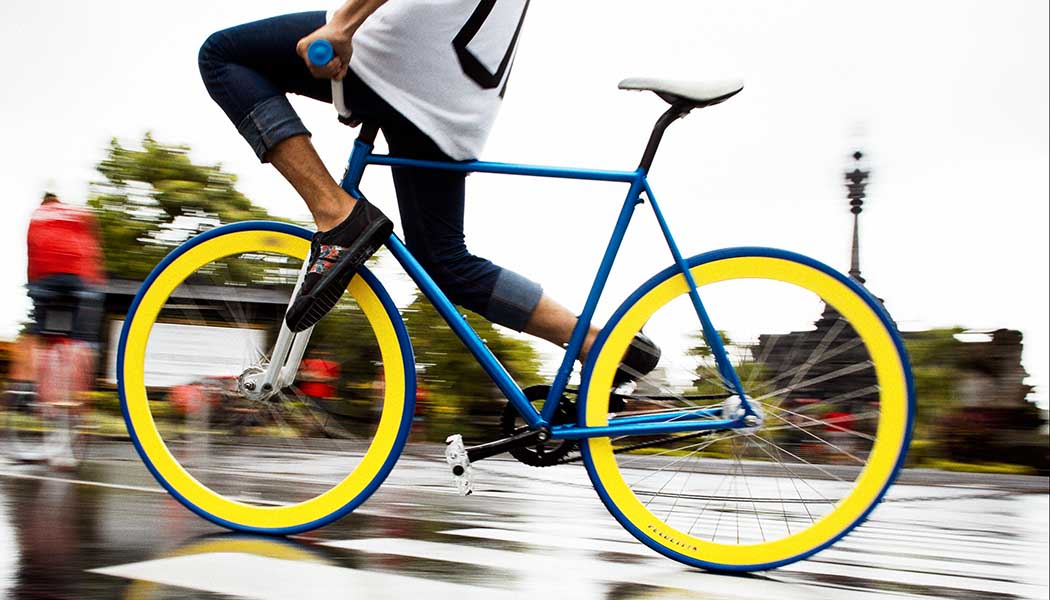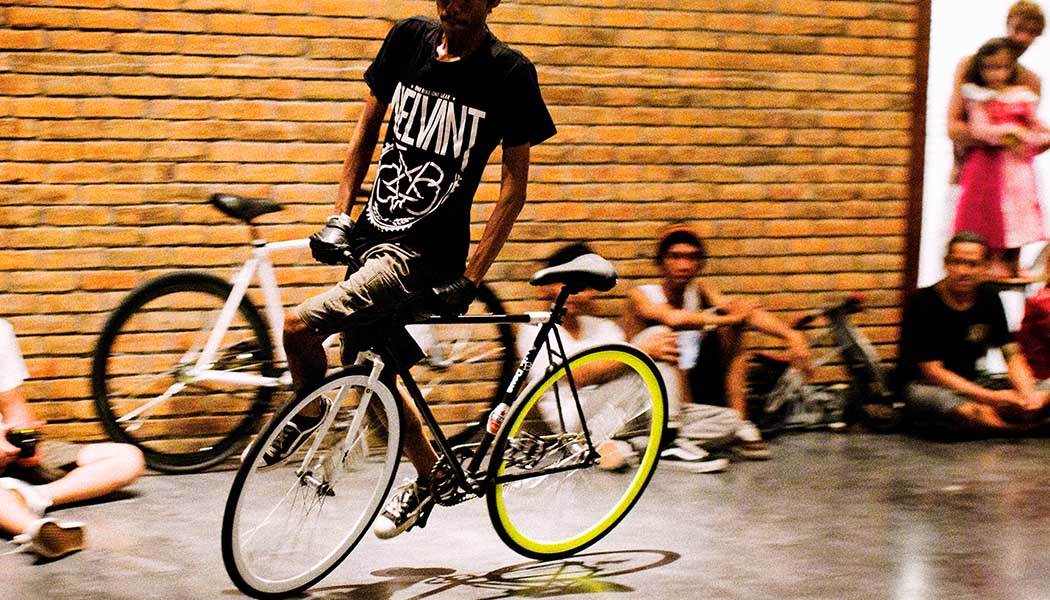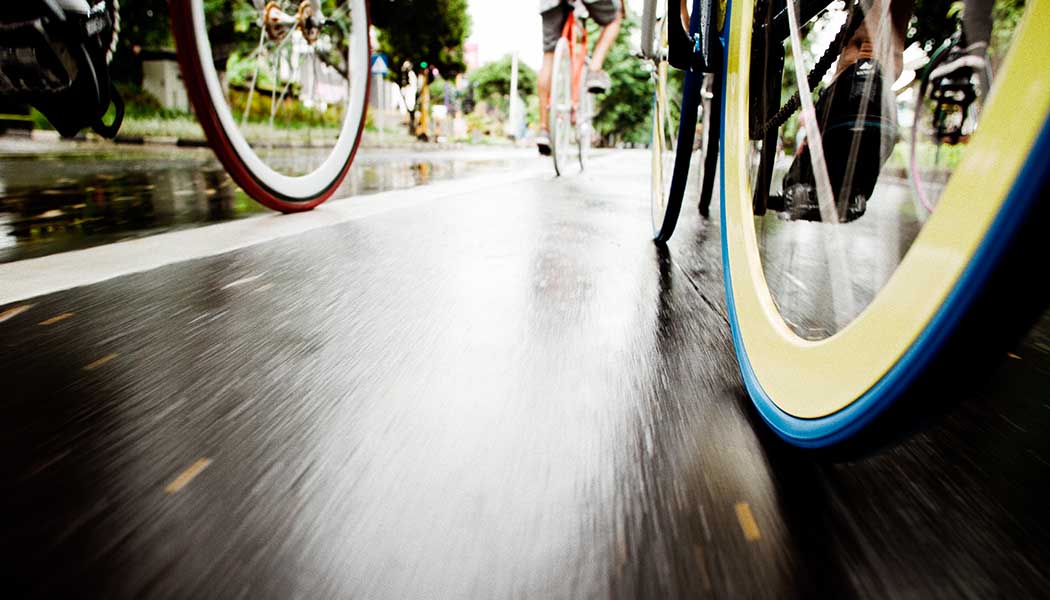Sleek and neat. Pared back. Stripped of non-essential items (including, erm, brakes), fixed gear bikes and the hipsters who ride them are making a name in Bali and beyond. Words: Tony McInerheney, Images: Tom Hawkins
NOT long after the invention of the wheel people built bikes that went forward when you peddled forward and backwards if you peddled them back.

The clock spun forward and the race of people evolved and with their rise through industrial and technological advancements the bicycle followed, undergoing many a manifestation.
Gears were added…suspension, horns, bells, mud flaps, lights…and even little computers that recorded how far you rode, blogging it at the same time to tell all and sundry about your great achievement.
There was the BMX Bandits, Tour de France and of course Lance Armstrong. The people were happy with their bikes and the people rejoiced. Then a funny thing happened. A splinter group stripped off all the technology, pairing back the bike to its basics. This regression was for pure lines, bright colours and solid materials. But there was something else. They brought something else to the form and function that is the fixed geared bicycle. They brought fashion.
The roots of the fixed gear bicycle’s popularity are set in America. Or, to be precise, the San Francisco and New York City bicycle courier riders who have used their vehicles to weave in and out of traffic for the last 30 years. If you need convincing, take a look at the 1986 movie Quicksilver, one of Kevin Bacons’ first, in which all of the courier riders gather in a rear alley to show off their skills at balancing and juggling their bodies and bikes over asphalt. Strangely enough, the same scene can be witnessed on no particular night in different parts of Bali. Goes to show that not much has changed.
Plagiarism is apparently one of the greatest forms of flattery, and many have since emulated their heroes of the silver screen. The whole sub culture of fixed gear biking throws out some interesting questions: firstly, why would you ride a bicycle that doesn’t have brakes, doesn’t go up hills very well and, because the peddles move when ever the wheels do, goes down hill even worse?

A hard question to answer, perhaps, but nevertheless fixed gear biking is happening. Thousands of these bikes are sold every day from New York to London and now Bali, no longer exempt. The fixie, as fixed geared bikes are affectionately known, has taken on a cult status. The mixture of form and function now has a big dollop of fashion.
The second question is: who are these good-looking, well-dressed kids that are riding these bikes? More than slightly reminiscent of the style of the American Jazz scene and the look of the Mods in London, this new breed of two-wheeled hipsters are sporting stovepipes, fitted T’s, open check shirts and low cut shoes. The discernible difference to this observer is the absence of the scooter, although I have seen a few officiates here that have those as well.

Sleek and neat. Paired back. Both bike and rider are broken down to the basics. Non-essential items, even the brakes, which I always thought fell into that ‘essential’ category, have been removed. Once the purity of the bike has been established, the form can take several manifestations. Trick bars, track frames, crank sets, seats, hubs, rims and tires. An array of colours and finishes. Laminated cards decorate the spokes, badges of honour earned at various meets.
More importantly, why am I so hooked? I am a surfer and biker and never been much of a bicycle rider, so why now? Between us, I wouldn’t be…had there been any Lycra involved. So is it the fashion? Fashion does seem to be a big part of the culture. The riders are often referred to as hipsters, and a quick check of Wikipedia tells us this is “…a slang term that first appeared in the 1940s, and was revived in the 1990s and 2000s to describe types of young, recently settled urban middle class adults and older teenagers with interests in indie rock and independent film.”
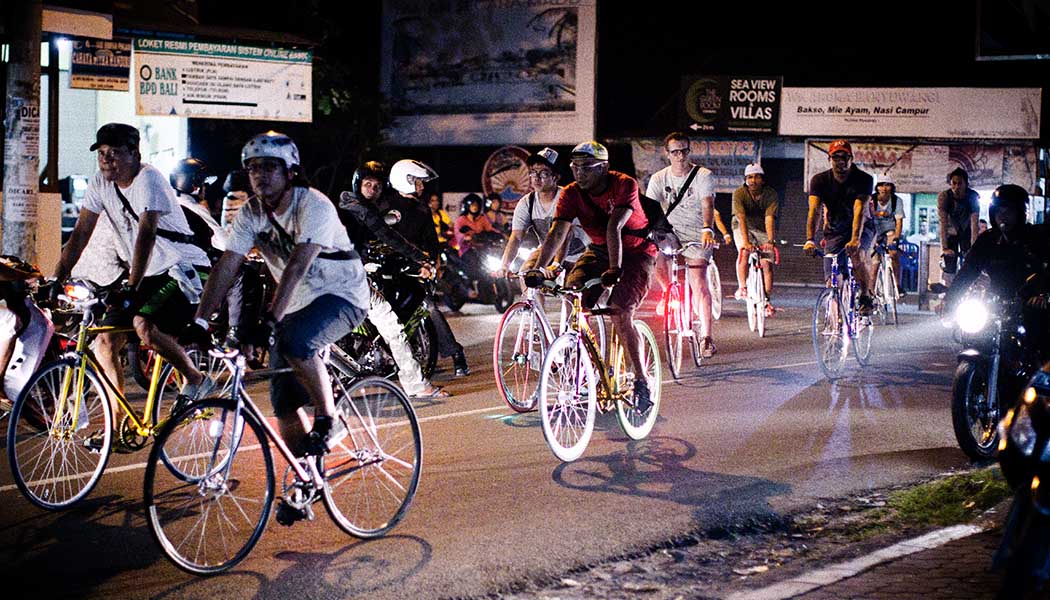
Looking at that I am happy to say, yes, I like the idea of being bundled into a group of educated people that are able to make reasonably sound decisions. However, Rob Horning, in his 2009 article for the w, entitled “The Death of the Hipster”, wrote: “Hipsters reduce the particularity of anything you might be curious about or invested in into the same dreary common denominator of how ‘cool’ it is perceived to be.” While this may come over as negative, I do not see it as so. Has he missed the minimalistic movement? Wasn’t their mantra pretty much the same? Actually, when applied to the fixed gear bicycle, it does go some ways to explaining the attraction of the sparse and somewhat uniform look of the bikes.
Other social observers, such as Arsel and Thompson, have described the hipster culture as nothing more than a myth, the coming together of all of the current running stereotypes in order to generate a gestalt which helps us to understand – but more importantly – to pigeon hole the idea of ‘cool’. This makes it easier of course to market the indie culture as a whole, rather than any one specific group of people within it. The problem for marketers is that if you really want to get under the skin of a hipster, all you have to do is call him or her a hipster.
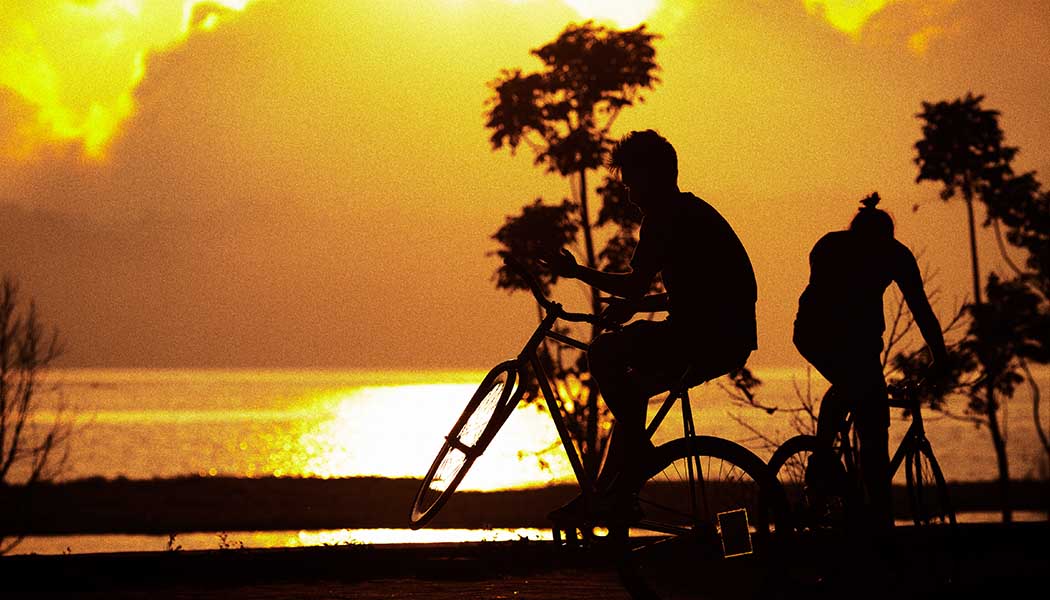
Hipsters have been dismissed so often and by so many that perhaps it’s time we coined a new term to describe the group of people that are fixie riders. They say that everything about them is exactingly constructed to give off the vibe that they just don’t care, but looking around, especially here in Bali, it’s something that can be attributed to most others…in art, or skating, and even bikers. What’s all the fuss about boys and girls in skinny jeans anyway? And what’s the scene like in other parts of Asia?
Being a relative newcomer to the fixed gear world it’s possibly a reach to make too many sweeping conclusions, but those places in which I have seen fixies – Singapore and Bali – are very different in their approach to the movement. The former is of course a place where money talks, where you find a veritable “who’s who” of metal. Names like Cinelli and Bianchi, Look and Leader and many more that have been synonymous with bicycles through many manifestations are now very prevalent in the fixed scene. They are joined by others such as Geekhouse, Volume, Eighth Inch and our very own Deus ex Machina through their DeusCYCLEWORKS(r) brand.
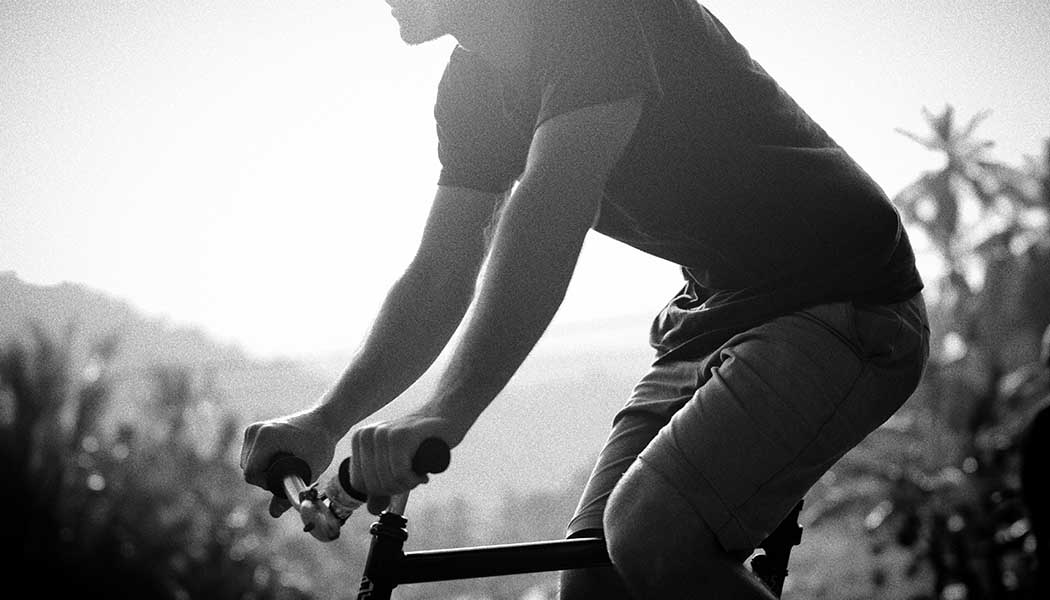
Bali, on the other hand, is a place where kids are finding old 10-speed frames or antique Dutch cruisers, stripping off the paraphernalia, painting them up in the backyard, sliding on deep V rims and fixed hubs…and riding. That’s not to say that you do not find name brands here…you do. And what is really exciting about the local scene – and what sets it off against other markets – is the mix of socio-economic backgrounds that have this common thread. It transcends background, wealth, religion, age and culture. Javanese kids, Balinese girls, American wheelies, white kids, Malaysians, Sumatran groovers, middle class, rich and poor…this is the very real slice of riders that meet, rain or shine, to tear along Denpasar highways and dodge along Sanur or Kuta paths. The common thread is the bikes, the fashion, the banter and, of course, the ride.

































